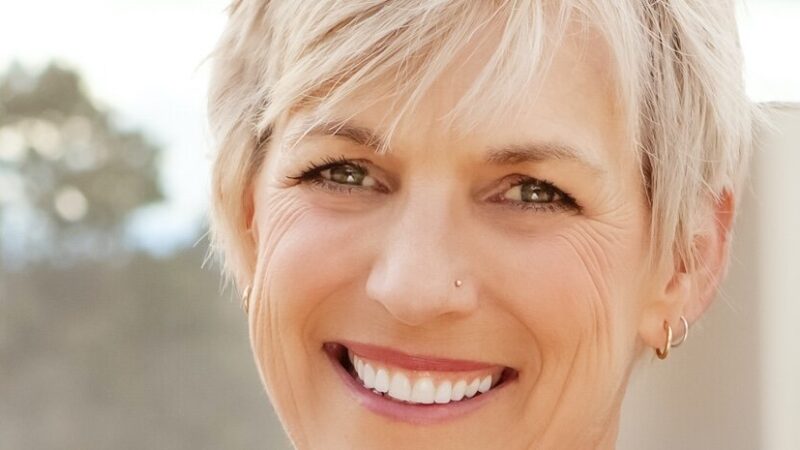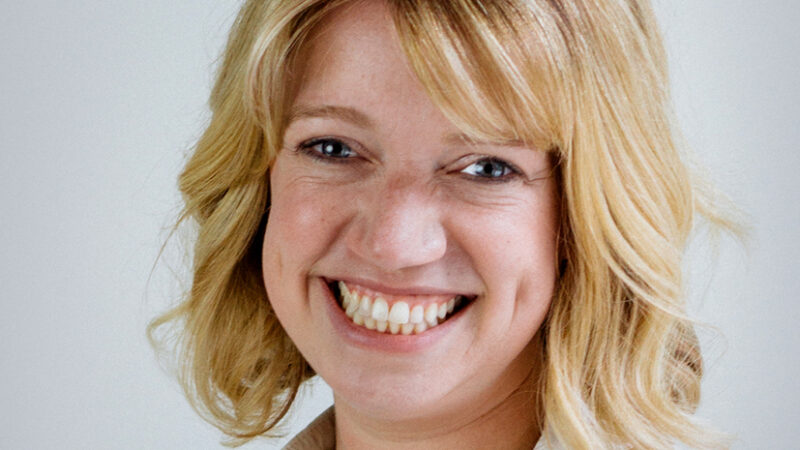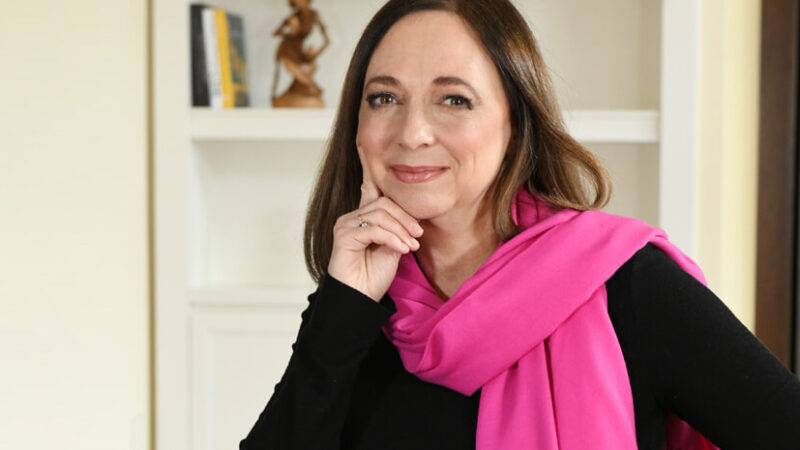-
E107: Becoming Okay Inside
Michael Singer — August 28, 2025
The fundamental spiritual question is not “How do I be okay?” It is “Why am I not okay?” Our ...
-
Andrew Holecek: What Reincarnates? | Part 2
Andrew Holecek — August 26, 2025
Join Tami Simon and Andrew Holecek for the second half of their exploration of reincarnation. Here,...
-
Honey Tasting Meditation: Build Your Relationship with Sweetness
There is a saying that goes “hurt people hurt people.” I believe this to be true. We have been...
Written by:
Amy Burtaine, Michelle Cassandra Johnson
-
Many Voices, One Journey
The Sounds True Blog
Insights, reflections, and practices from Sounds True teachers, authors, staff, and more. Have a look—to find some inspiration and wisdom for uplifting your day.
Standing Together, and Stepping Up
Written By:
Tami Simon -
The Michael Singer Podcast
Your Highest Intention: Self-Realization
Michael Singer discusses intention—"perhaps the deepest thing we can talk about"—and the path to self-realization.
This Week:
Andrew Holecek: What Reincarnates? | Part 2 -
Many Voices, One Journey
The Sounds True Blog
Insights, reflections, and practices from Sounds True teachers, authors, staff, and more. Have a look—to find some inspiration and wisdom for uplifting your day.
Take Your Inner Child on Playdates
Written By:
Megan Sherer
600 Podcasts and Counting...
Subscribe to Insights at the Edge to hear all of Tami's interviews (transcripts available, too!), featuring Eckhart Tolle, Caroline Myss, Tara Brach, Jack Kornfield, Adyashanti, and many more.
Most Recent
Kelly Wendorf: Flying Lead Change and Our Evolutionary...
Kelly Wendorf is an executive and personal development certified master coach, educator, spiritual mentor, and socially responsible entrepreneur. She is the founding partner of EQUUS, a leadership development organization that works with high-performing individuals, groups, and thought leaders. Her evidence-based approach to creating conditions for breakthrough transformative learning has earned her worldwide acclaim. In this podcast, Kelly joins Tami Simon to talk about her new book, Flying Lead Change: 56 Million Years of Wisdom for Leading and Living, and the unique evolutionary relationship between human beings and horses. Kelly and Tami also discuss the five central values of equine culture (safety, connection, peace, joy, and freedom), the community we share with the larger natural world, and much more.
Diana Spalding: Let’s Nurture Moms and Birth a New C...
Diana Spalding is a certified nurse midwife and mother of three young children. She has a master’s degree in midwifery from NYU and has worked as a nursing school professor at Cedar Crest College, as well as a midwifery school advisor at Georgetown University. With Sounds True, Diana Spalding is the author of the book The Motherly Guide to Becoming Mama: Redefining the Pregnancy, Birth, and Postpartum Journey (with Jill Koziol and Liz Tenety). In this podcast, Diana speaks with Sounds True founder Tami Simon about creating a more nurturing society for mothers, redefining motherhood for today’s times, the incredible productivity of moms at home and work, and much more.
DIY Rose Essence and Heart Breathing Ritual
The heart chakra is the central integrating chamber of the chakra system. Through the healing power of love, all things eventually find their way to connection and wholeness.
ANODEA JUDITH
Heart Medicine Rituals
The greatest lesson I have learned so far is to exist within my heart. This is a lifelong practice for me because, like many, I was not taught to inhabit my heart space. On a physical level, the general collective is not doing so well in our hearts. This is evidenced by the stark reality that heart disease is the leading cause of death worldwide. This high incidence of disease points to a deeper situation of the heart, but in order to be open to the possibility that more profound heart healing is necessary and possible, we must open our minds to a more metaphysical or energetic interpretation of what the heart is and what it does. Ancestrally, the heart held a much higher evolutionary significance, and as our consciousness split, we moved from inhabiting our hearts to glorifying our minds. Perhaps this disconnect can illuminate some clues for us to consider to reclaim more balance within our hearts, ourselves, and our world.
Vibrationally, the heart contains the strongest electromagnetic field of any organ in the body. Transference of heart energy can occur in close proximity with another human or animal; and if you apply the theories of quantum entanglement and wave function collapse, transference of heart energy can resonate beyond space or time. Plants and the elements, too, can have a positive entrainment effect on the heart, reiterating the interconnectedness of all life and the organic balance nature engenders. In both traditional Chinese and Tibetan medicines, the heart is the mind. In TCM, grief is stored in the lungs and closely related to the heart. The Hopi defined harmony as one’s heartbeat in resonance with others and the Earth.
Our liberation is tied to the heart. The cost of liberation is unique to every person and is cosmically linked to each of us. The price of liberation varies for each individual, but we are given choices: in what we think, what we feel, what we believe, how we want to be. The inability to see choice is the unconsciousness of the fear-based toxic masculine that seeks to keep us disconnected and disempowered.
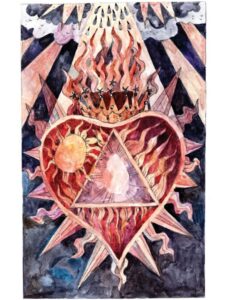
Our liberation depends largely on our ability to love unconditionally. Unconditional love means loving without circumstance or codependence. This can take different forms, from exiting a toxic relationship to taking more care of yourself. And it doesn’t stop there. If you want to get really free, you have to love yourself no matter what, and love all beings no matter what. Tall order? Yes. Impossible? No! While humans are conditioned to be in separation, plants (and animals) hold only unconditional love for all life. There are people on this Earth who radiate unconditional love, and when you are in their company, your heart is completely relaxed and open. For instance, my heart feels completely free when I am with people and animals who love me unconditionally. My heart also feels free in this way when I am in nature. Can you think of anyone who loves you unconditionally? Or perhaps it’s easier to think of an animal or pet? What if you loved yourself and everyone like that? What if you loved all your uncomfortable parts, illnesses, and neuroses like that?
EXERCISE: Making a Rose Essence and Heart Breathing Exercise
There are a few plants whose application is almost universal, and the rose is one such flower. Roses hold the frequency of unconditional love and have an affinity for the heart chakra. This ritual works best with either a wild growing or organically cultivated rose; it can be any species within the Rosa genus. Some of the lower vibratory states that can be addressed with rose include grief, loss, heartbreak, depression, and panic.
This ritual is very simple. You’re going to combine the process for making your own medicine (see a simple how-to video here) using the rose of your choice, with the heart breathing exercise that follows. The heart breathing can be done while the flowers are in the water, working their magic. The heart energy you engage during the medicine-making process will become part of the energetic signature of your flower essence. After you bottle it and make the dosage bottle, take a few drops and see what you notice around your heart. Be sure to notate your findings. You now have a rose flower essence for your apothecary whenever you or someone else needs it.
HEART BREATHING RITUAL
After you have placed the flowers in the bowl with the water, sit comfortably on the ground, if possible. Close your eyes or set your gaze low. Place both hands over your heart and begin to breathe into the heart space. Visualize the rose you are working with. Notice how the breath moves in and out of the heart—not forcing the air, just allowing it to move. See if you can sense into how the heart is feeling—in the front, in the back, all sides. Be sure to breathe into the back of the heart space. Notice how the heart feels when you place your awareness on it. See if it’s okay to allow whatever is arising, witnessing without judgment.
After a few minutes, begin to bring the heart back into a neutral position. Thank your heart and the spirit of rose for sharing with you. Feel your body making contact with the Earth, deepen the breath, and slowly open your eyes.
The video on how to make your own flower essence medicine can be found here.
This is an excerpt from The Bloom Book: A Flower Essence Guide to Cosmic Balance by Heidi Smith.
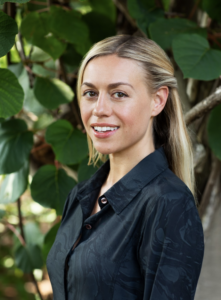
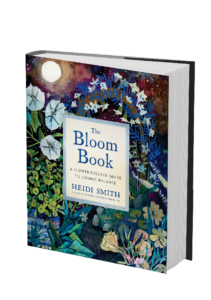
Heidi Smith, MA, RH (AHG), is a psychosomatic therapist, registered herbalist, and flower essence practitioner. Within her private practice, Moon & Bloom, Heidi works collaboratively with her clients to empower greater balance, actualization, and soul-level
healing within themselves. She is passionate about engaging both the spiritual and scientific dimensions of the plant kingdom, and sees plant medicine and ritual as radical ways to promote individual, collective, and planetary healing. She lives in Brooklyn, New York, with her partner and two cats. For more, visit moonandbloom.com.
Learn More
Sounds True | Amazon | Barnes & Noble | Bookshop
Customer Favorites
Susan Cain: Bittersweet: The Hidden Riches in Sorrow a...
We all have the power to transform our pain and sorrow into a beautiful offering throughout our lives. This is a deep truth that Susan Cain writes about in her new book, Bittersweet: How Sorrow and Longing Make Us Whole. In this podcast, Tami Simon speaks with the bestselling author and lecturer about a new understanding of high sensitivity and the connection between sorrow and joy.
Give a listen to this heart-opening podcast exploring: How an experience of the bittersweet can lead to profound transcendence; the creative stimulation we can access in the gap between what is and what we wish were; stepping out of the paradigm of winning at all costs; the connection between high sensitivity and an attunement to the bittersweet; our human longing for a more perfect and beautiful world; the link between sorrow and kindness; how confronting our sorrows presents a fork in the road; the archetype of the wounded healer; moving on versus moving forward; healing our inherited traumas; leaning into the question, “What am I longing for?”; and more.
This episode first aired live and on video on Sounds True One. To watch Insights at the Edge episodes live and on video, and to access additional bonus Q&A, please visit join.soundstrue.com to learn more.
The Integral Operating System – with Ken Wilber
Upgrade the Way You Think—and Live
Are you ready to ramp up the performance of your human hardware? If so, then welcome to Version 1.0 of Ken Wilber’s The Integral Operating System.
No, it’s not computer software. It’s a course that crystallizes Ken’s lifelong investigation into the truths of Eastern and Western thought into a cutting-edge tool for sparking a revolution of your mind and spirit.
Ken Wilber has spent more than three decades creating an all-embracing vision that incorporates the best elements from all of humanity’s spiritual and scientific traditions into a model that reveals even deeper levels of truth—the Integral Map. Now, this profoundly versatile tool has been formatted into a multimodal “platform for the soul,” one that you can self-install to accelerate the growth of your spiritual evolution, intellect, relationships with others, and even your physical health.
As one of the most influential figures of human spiritual development, Ken Wilber has been called the “Einstein of consciousness.” Here is an unprecedented chance for you to “download” this remarkable thinker’s teachings as he illuminates the intricacies of The Integral Operating System.
How to Breathe With Your Whole Body

Spending time in the woods—or shinrin-yoku (“forest bathing”)—has been proven to significantly strengthen our immune system and increase our overall happiness. The forest air triggers our bloodstream to produce 40 percent more natural killer cells, which help fight harmful viruses, bacteria, and other illnesses. The tradition of forest bathing goes back a long time in Japan’s folk medicine, but it has its longest history in China and Taiwan and has been called senlinyu there for centuries.
Ancient knowledge about healing from nature is also found in traditional Chinese medicine. Numerous exercises from qigong are designed to “absorb the chi of nature” and are carried out mainly in forests or green areas with trees. Even the qigong masters of the past apparently knew that nature not only heals in the form of plant- and mineral-based pharmaceutical substances, but also by a person simply being present in a green space and breathing. In qigong, absorbing the chi of nature is always associated with breathing techniques.
Xiaoqiu Li, a two-time Chinese state champion in wushu (traditional Chinese martial arts), taught me the following exercise for “whole-body breathing.” This specific exercise helps you to take in the healthy forest air quite intensely and to release old air and harmful substances very consciously. You will especially feel the purifying effects of this exercise in your body if you are a smoker or live in a polluted city.
Look for a place in the woods that appeals to you and that has an even surface to stand on, and then follow these steps:
- Stand with your feet shoulder-width apart and as parallel to each other as possible, with your knees slightly bent and arms relaxed at your sides.
- “Open” your chest cavity by lifting your arms up in the air away from your body, in the form of a circle overhead, as if you were a tree revealing its mighty crown to the sky. Take a deep breath in while doing this, starting in your stomach and continuing to fill up your chest with air.
- When your arms meet over your head, guide them down in front of your body, holding them together and parallel to each other. Simultaneously begin to breathe out, making fists with your hands while squatting down.
- At the end of these movements, slowly press your elbows against your body at stomach level. This pressing of the elbows and curving of your body help your lungs to empty themselves entirely.
- Repeat these movements slowly and mindfully and try to make everything as smooth as possible.
Excerpted from The Biophilia Effect: A Scientific and Spiritual Exploration of the Healing Bond Between Humans and Nature by Clemens G. Arvay.
 Born in 1980, Clemens G. Arvay is an Austrian engineer and biologist. He studied landscape ecology (BSc) at Graz University and applied plant sciences (MSc) at the University of Natural Resources and Life Sciences in Vienna. Arvay examines the relationship between humans and nature, focusing on the health-promoting effects of contact with plants, animals, and landscapes. He also addresses a second range of topics that includes ecologically produced food along with the economics of large food conglomerates. Clemens G. Arvay has written numerous books, including his bestseller The Biophilia Effect. For more, please visit clemensarvay.com.
Born in 1980, Clemens G. Arvay is an Austrian engineer and biologist. He studied landscape ecology (BSc) at Graz University and applied plant sciences (MSc) at the University of Natural Resources and Life Sciences in Vienna. Arvay examines the relationship between humans and nature, focusing on the health-promoting effects of contact with plants, animals, and landscapes. He also addresses a second range of topics that includes ecologically produced food along with the economics of large food conglomerates. Clemens G. Arvay has written numerous books, including his bestseller The Biophilia Effect. For more, please visit clemensarvay.com.
Buy your copy of The Biophilia Effect at your favorite bookseller!
Sounds True | Amazon | Barnes & Noble | Indiebound

